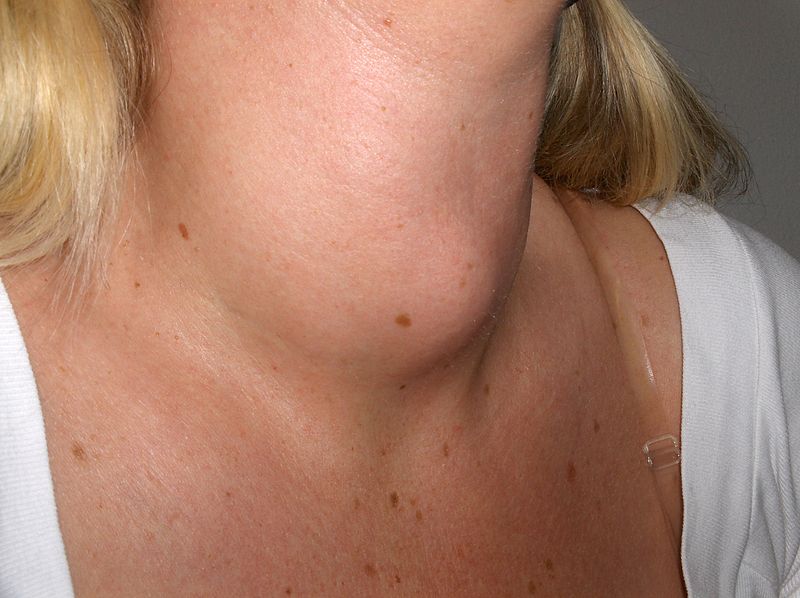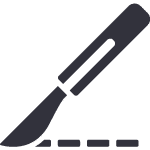Introduction
- Introduce yourself to the patient
- Wash your hands
- Briefly explain to the patient what the examination involves
Approach the examination in a systematic way, yet be prepared to be instructed to move on quickly to certain sections by any examiner.
Inspection
Ensure adequate exposure of the entire neck and the patent is looking straight ahead
Inspect for:
- Obvious lumps
- Scars or skin changes
If any mass noted on inspection:
- Ask the patient to stick their tongue out
- Any mass in the midline that rises on tongue protrusion is likely to be a thyroglossal cyst
- Ask the patient to swallow (offer the patient a glass of water to use)
- Any mass(es) in the midline that rises on swallowing are likely to be thyroid mass(es) or a goitre

Figure 1 – A multinodular thyroid goitre, that rises upon swallowing
Palpation
Stand behind the patient to palpate the neck, informing the patient when you do this.
Using the tips of the fingers, palpate lymph nodes of the head and neck:
- Submental, Submandibular, Pre-auricular, Anterior Cervical, Supraclavicular, Posterior Cervical, Post-Auricular, and Occipital
Classification of Lymph Nodes in the Neck
Lymph nodes of the neck can also be divided into 5 levels, useful when classifying their position:
- I – submental and submandibular triangles
- II – upper jugular nodes
- III – middle third jugular
- IV – lower jugular nodes
- V – posterior triangle lymph nodes
Parotid Gland
Palpate the parotid gland (between the sternocleidomastoid and the mandible)
- Palpate gently for any tenderness, swellings, or lumps
- Examine the other side
Submandibular Gland
Bimanually palpate the submandibular gland (inferior and posterior to the body of the mandible)
- Using a gloved hand, press the index finger onto the floor of the patients mouth
- Place your other index finger at the inferior body of the mandible, slightly away from the midline
- Ballot the submandibular gland between your fingers
- Repeat for the other side
Thyroid Gland
Palpate the thyroid gland
- Start at the midline, move your hands inferiorly to pass over the thyroid cartilage, until you feel the cricoid cartilage and the two inferior tracheal rings (the thyroid and thyroid isthmus overlies this area)
- Using the pads of your fingers, gently pass them over this area to palpate the isthmus and thyroid lobes
- Ask the patient to swallow (offer the patient a glass of water to use), assessing for equal rise of the thyroid
Remember, if you have found any lump during the examination, ensure you have assessed for Size, Shape, Location, Consistency. Fluctuance, Trans-illumination, Pulsatility, Temperature, Overlying skin changes, Mobility, and Auscultation
Completing the Examination
Remember, if you have forgotten something important, you can go back and complete this.
To finish the examination, stand back from the patient and state to the examiner that to complete your examination, you would like to perform:
- An ultrasound scan (USS) and fine needle aspirate (FNA) of any lump identified (unless pulsatile)
- An examination of the temporomandibular joint
